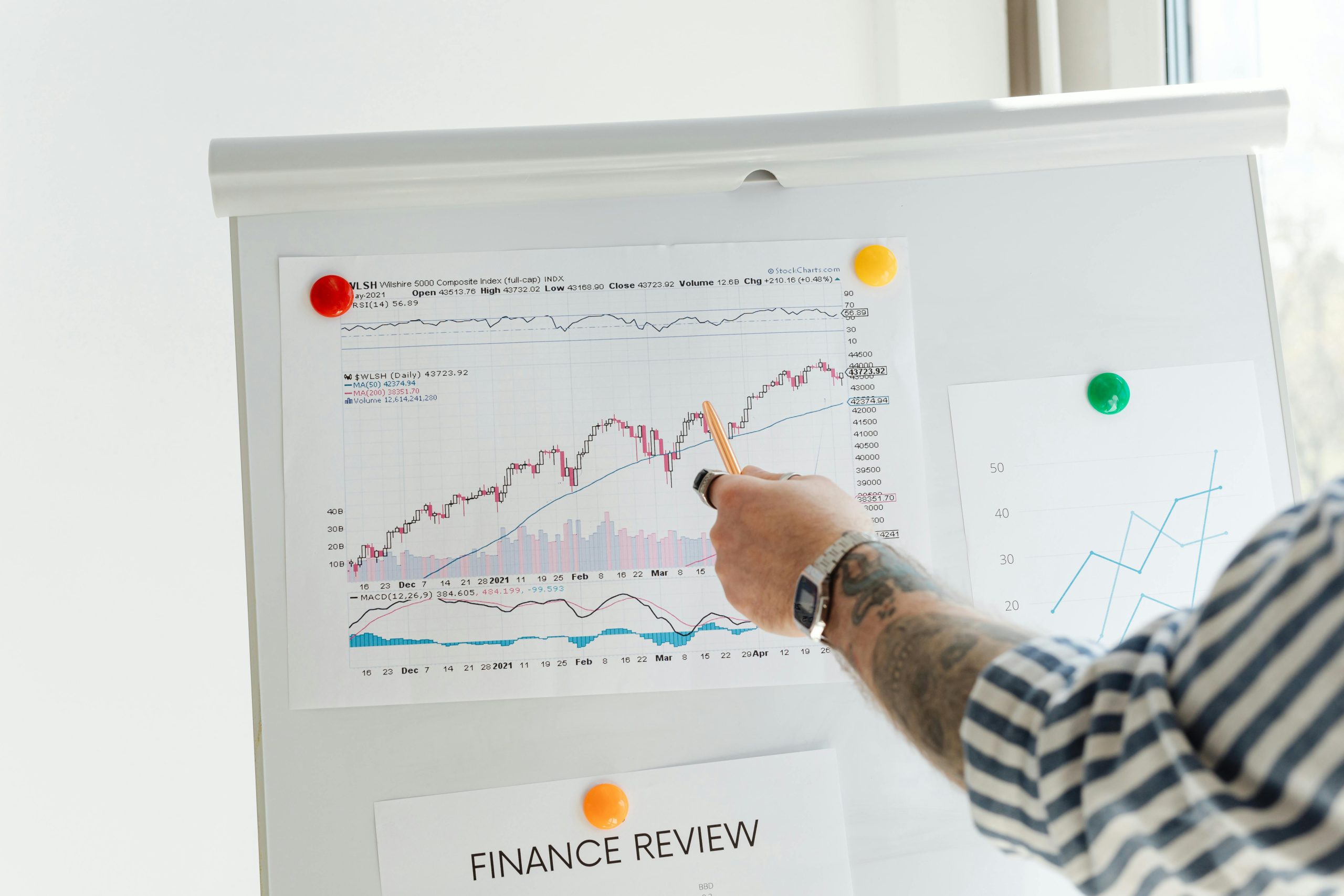The Ultimate Guide to Startup Idea Validation: Why 70% of Successful Startups Invest in Validation Before Launch
Every day, thousands of entrepreneurs across Southeast Asia launch startups with what they believe are revolutionary ideas. However, according to recent studies by CB Insights and Startup Genome, 90% of these ventures fail within their first two years. The most shocking revelation? Over 42% fail simply because there was no market need for their product or service.
This stark reality underscores a critical gap in the entrepreneurial journey: the absence of proper startup idea validation. While passion and innovation drive the entrepreneurial spirit, systematic validation serves as the bridge between brilliant concepts and market success. Therefore, understanding and implementing comprehensive startup idea validation becomes essential for any entrepreneur serious about building a sustainable business.
Understanding Startup Idea Validation: Beyond the Basics
Startup idea validation is the systematic process of testing and verifying whether your business concept addresses a real market problem that customers are willing to pay to solve. Furthermore, it’s not merely asking friends and family if they like your idea—instead, it’s conducting rigorous market research, prototype testing, and customer discovery to determine if your solution has genuine commercial viability.
The concept extends beyond simple market research. Moreover, true validation involves understanding customer behavior, market dynamics, competitive landscapes, and the economic feasibility of your proposed solution. Consequently, it’s about transforming assumptions into data-driven insights that guide strategic decision-making.
The Evolution of Validation in the Digital Age
Traditional validation methods relied heavily on surveys, focus groups, and demographic analysis. In contrast, today’s digital ecosystem has revolutionized how entrepreneurs can validate ideas. AI-powered analytics, social media insights, rapid prototyping tools, and direct-to-consumer platforms have made validation faster, more accurate, and significantly less expensive.
Indonesian tech entrepreneurs, in particular, benefit from this digital transformation. With over 270 million people online and Southeast Asia’s rapidly growing digital economy, entrepreneurs can now validate ideas across diverse markets simultaneously. As a result, they gain insights that were previously impossible to obtain.

The Compelling Statistics: Why 70% of Successful Startups Prioritize Validation
Research conducted by Harvard Business School, combined with data from successful Southeast Asian startups, reveals that 70% of ventures that achieve Series A funding and beyond invested significant time and resources in comprehensive idea validation before launch.
Breaking Down the Success Metrics
Market-validated startups show:
- 3.2x higher customer retention rates
- 65% faster time-to-market for their MVP
- 45% lower customer acquisition costs
- 2.8x more likely to secure initial funding
- 85% better product-market fit scores
Regional Success Stories: Companies like Gojek, Tokopedia, and Traveloka didn’t stumble upon success accidentally. Instead, each underwent extensive validation phases, testing everything from user interface preferences to payment method adoption across different Indonesian demographics.
For instance, Gojek’s founders spent months understanding Jakarta’s transportation pain points before launching their motorcycle taxi service. They validated not just the demand for convenient transportation, but also payment preferences, driver economics, and operational logistics through pilot programs in specific Jakarta neighborhoods.
The True Cost of Skipping Validation
The financial and emotional toll of launching unvalidated ideas extends far beyond immediate losses. Consequently, entrepreneurs who skip validation face:
Direct Financial Impact
- Average loss of $50,000-$200,000 in initial investment
- 18-month delay in finding product-market fit
- 300% higher marketing costs due to unclear target audiences
- Significant opportunity costs from pursuing wrong markets
Strategic Consequences
- Brand reputation damage from failed product launches
- Team morale deterioration and talent loss
- Investor confidence erosion affecting future funding
- Market positioning challenges when pivoting becomes necessary
The Indonesian Context
In Indonesia’s competitive startup ecosystem, where funding is increasingly selective, unvalidated ideas face even steeper challenges. Additionally, local investors now specifically ask for validation metrics during pitch presentations, making it a prerequisite rather than an optional step.
The Comprehensive Validation Framework: A Systematic Approach
Effective startup idea validation follows a structured methodology that progresses from high-level market assessment to detailed customer behavior analysis.
Phase 1: Market Opportunity Assessment
Market Size Analysis Begin by quantifying your Total Addressable Market (TAM), Serviceable Addressable Market (SAM), and Serviceable Obtainable Market (SOM). For Southeast Asian markets, consider regional variations in purchasing power, digital adoption, and cultural preferences.
Competitive Landscape Mapping Identify direct and indirect competitors, analyzing their strengths, weaknesses, and market positioning. Pay special attention to local competitors who understand regional nuances better than global players.
Regulatory Environment Review Southeast Asian markets have diverse regulatory frameworks. Therefore, ensure your idea complies with local laws, particularly in sectors like fintech, healthcare, and e-commerce where regulations are rapidly evolving.
Phase 2: Customer Discovery and Problem Validation
Deep Customer Interviews Conduct 50-100 interviews with potential customers to understand their pain points, current solutions, and willingness to adopt new approaches. Focus on behavior rather than opinions—what customers do reveals more than what they say they’ll do.
Problem-Solution Fit Testing Create simple prototypes or mockups to test whether your proposed solution actually addresses the identified problems. Use tools like Figma for digital products or 3D printing for physical products to create testable versions quickly.
Jobs-to-be-Done Analysis Understand what “job” customers are hiring your product to do. This framework, popularized by Clayton Christensen, reveals customer motivations beyond surface-level needs.
Phase 3: Solution Validation and MVP Testing
Minimum Viable Product Development Build the simplest version of your product that can test your core assumptions. For Indonesian startups, consider mobile-first approaches given the country’s mobile-heavy internet usage patterns.
A/B Testing Implementation Test different versions of your solution with real users. This might involve testing different features, pricing models, or user interface designs to optimize for local preferences.
Metrics Definition and Tracking Establish clear success metrics before launching your MVP. Track user engagement, conversion rates, customer acquisition costs, and lifetime value to understand commercial viability.
AI-Powered Validation: The Modern Entrepreneur’s Advantage
Artificial intelligence has transformed validation from a time-intensive process into a data-driven methodology that can be executed rapidly and cost-effectively.
Advanced Analytics Applications
Predictive Market Modeling AI tools can analyze market trends, consumer behavior patterns, and economic indicators to predict demand for your product category. Furthermore, machine learning algorithms can identify market opportunities that traditional research might miss.
Sentiment Analysis Social media listening tools powered by natural language processing can analyze conversations about problems your startup aims to solve. As a result, they reveal real customer pain points and language preferences.
Automated Survey Analysis AI can process thousands of survey responses, identifying patterns and insights that would take human analysts weeks to uncover. This enables more comprehensive customer research at lower costs.
Practical AI Tools for Indonesian Entrepreneurs
Local Market Intelligence Tools like Google Trends, combined with AI analytics platforms, can reveal search patterns and interests specific to Indonesian markets. Consequently, they help entrepreneurs understand regional demand variations.
Customer Behavior Prediction Machine learning models can analyze e-commerce data, social media interactions, and digital payment patterns to predict how Indonesian consumers might respond to new products or services.

Regional Considerations: Validating Ideas in Southeast Asian Markets
Southeast Asia’s diversity requires nuanced validation approaches that account for cultural, economic, and technological differences across countries and regions.
Cultural Validation Factors
Communication Preferences Indonesian consumers may respond differently to direct questioning compared to Western markets. Therefore, indirect research methods, observational studies, and community-based feedback often yield more accurate insights.
Trust and Social Proof Validation in Indonesian markets must consider the importance of social proof, family influence, and community acceptance in purchase decisions. Individual customer interviews should be supplemented with group dynamics research.
Mobile-First Behavior With over 90% of Indonesian internet users accessing the web via mobile devices, validation must prioritize mobile experiences and consider data usage constraints in rural areas.
Economic Considerations
Price Sensitivity Analysis Indonesian markets show significant price sensitivity across different income segments. Therefore, validation must test multiple pricing tiers and payment methods, including installment options and digital wallet integrations.
Local Payment Preferences Understanding preferences for cash-on-delivery, mobile payments, bank transfers, and credit options is crucial for successful validation in Indonesian markets.
Building Your Validation Strategy: A Practical Roadmap
Successful validation requires a systematic approach tailored to your specific industry, target market, and available resources.
1-2 Week: Foundation Setting
- Define your core assumptions about customers, problems, and solutions
- Identify key metrics that will indicate validation success
- Create your research methodology and timeline
- Recruit initial interview participants
3-6 Week: Customer Discovery
- Conduct customer interviews and surveys
- Analyze competitor strategies and market positioning
- Test initial problem-solution fit hypotheses
- Refine your understanding of target customer segments
7-10 Week: Solution Testing
- Develop and test your MVP with real users
- Conduct A/B tests on key features or approaches
- Gather quantitative data on user behavior and preferences
- Iterate based on feedback and performance metrics
11-12 Week: Commercial Validation
- Test pricing strategies and revenue models
- Validate customer acquisition channels and costs
- Assess scalability and operational requirements
- Prepare comprehensive validation report for stakeholders
Common Validation Pitfalls and How to Avoid Them
Even well-intentioned entrepreneurs make critical mistakes during validation that can lead to false conclusions and poor strategic decisions.
Confirmation Bias Trap
Entrepreneurs often unconsciously seek information that confirms their preexisting beliefs about their ideas. To combat this, actively seek disconfirming evidence and maintain objectivity throughout the research process.
Sample Size Inadequacy
Testing with too few customers or focusing on non-representative samples can produce misleading results. Therefore, ensure your research includes diverse customer segments and sufficient sample sizes for statistical significance.
Feature Creep During Validation
Adding features based on individual customer feedback without broader validation can lead to complex, unfocused products. Maintain discipline around your core value proposition during the validation process.
The Future of Startup Validation: Trends and Emerging Technologies
The validation landscape continues evolving with technological advances and changing consumer behaviors, particularly in emerging markets like Indonesia.
Emerging Technologies
- Virtual reality for immersive product testing
- Blockchain for transparent customer feedback verification
- IoT devices for real-world usage data collection
- Advanced AI for predictive customer behavior modeling
Market Evolution
Southeast Asian markets are becoming more sophisticated in their adoption of new technologies. Consequently, entrepreneurs must stay current with evolving validation methodologies and tools.
Conclusion: Making Validation Your Competitive Advantage
Startup idea validation is not a one-time checkpoint but an ongoing discipline that successful entrepreneurs embed into their company culture. The 70% of successful startups that prioritize validation understand that it’s not about proving they’re right—instead, it’s about discovering what customers actually need and building solutions that create genuine value.
For Indonesian entrepreneurs operating in one of the world’s most dynamic digital economies, validation provides the foundation for building sustainable, scalable businesses that can compete globally while serving local market needs effectively.
The entrepreneurs who master validation gain more than just better products—they develop deeper customer empathy, stronger strategic thinking skills, and the confidence that comes from building businesses on solid foundations rather than hopeful assumptions.
In an ecosystem where innovation meets opportunity, validation serves as the bridge that transforms creative ideas into market-ready solutions. The question isn’t whether you can afford to invest time in validation—rather, it’s whether you can afford not to.
As ISTAR Technology continues connecting Indonesian talent with global opportunities, we see firsthand how proper validation enables entrepreneurs to build solutions that don’t just succeed locally but scale internationally. The future belongs to founders who validate first and build second, ensuring every innovation creates meaningful impact in the digital world.

